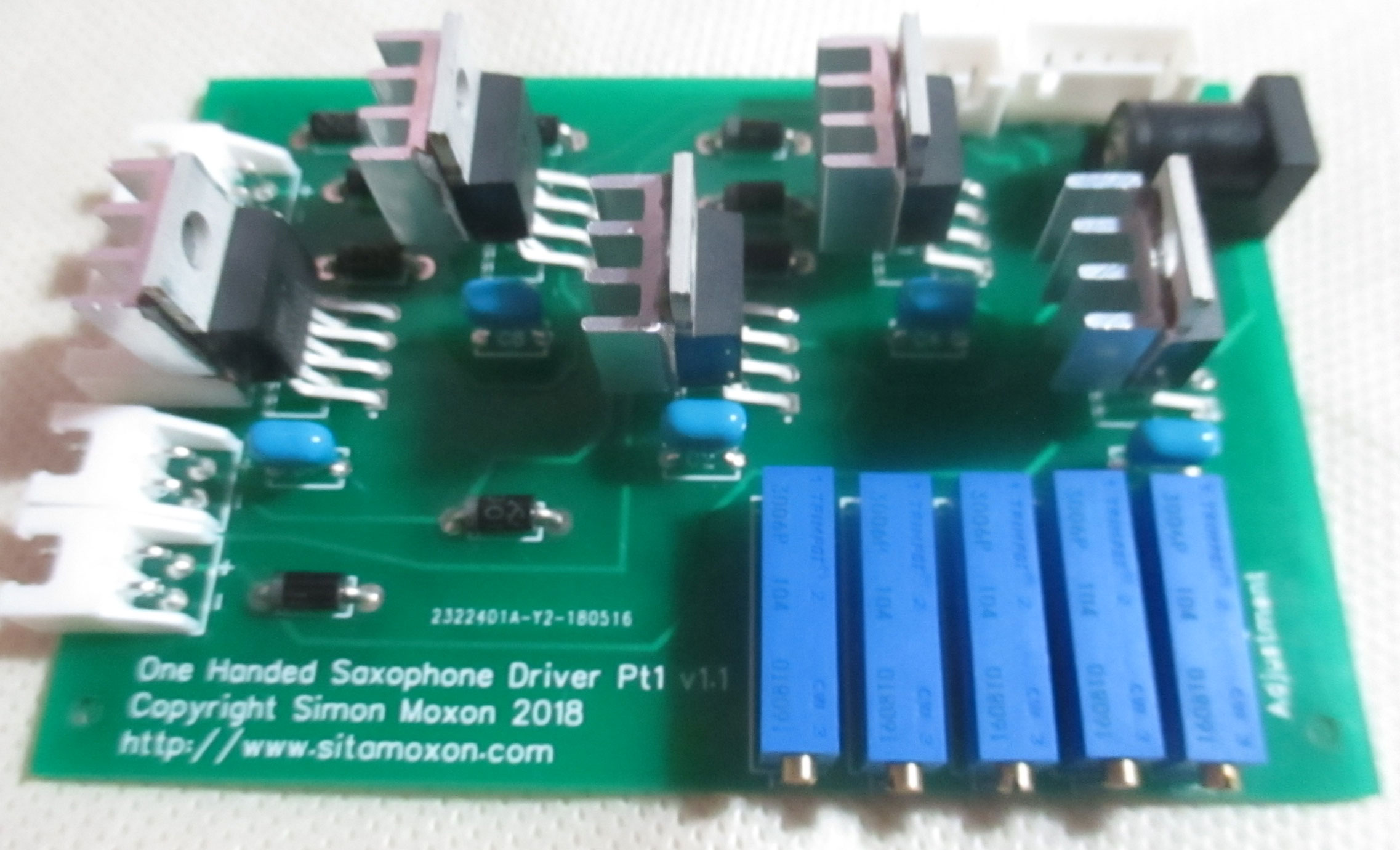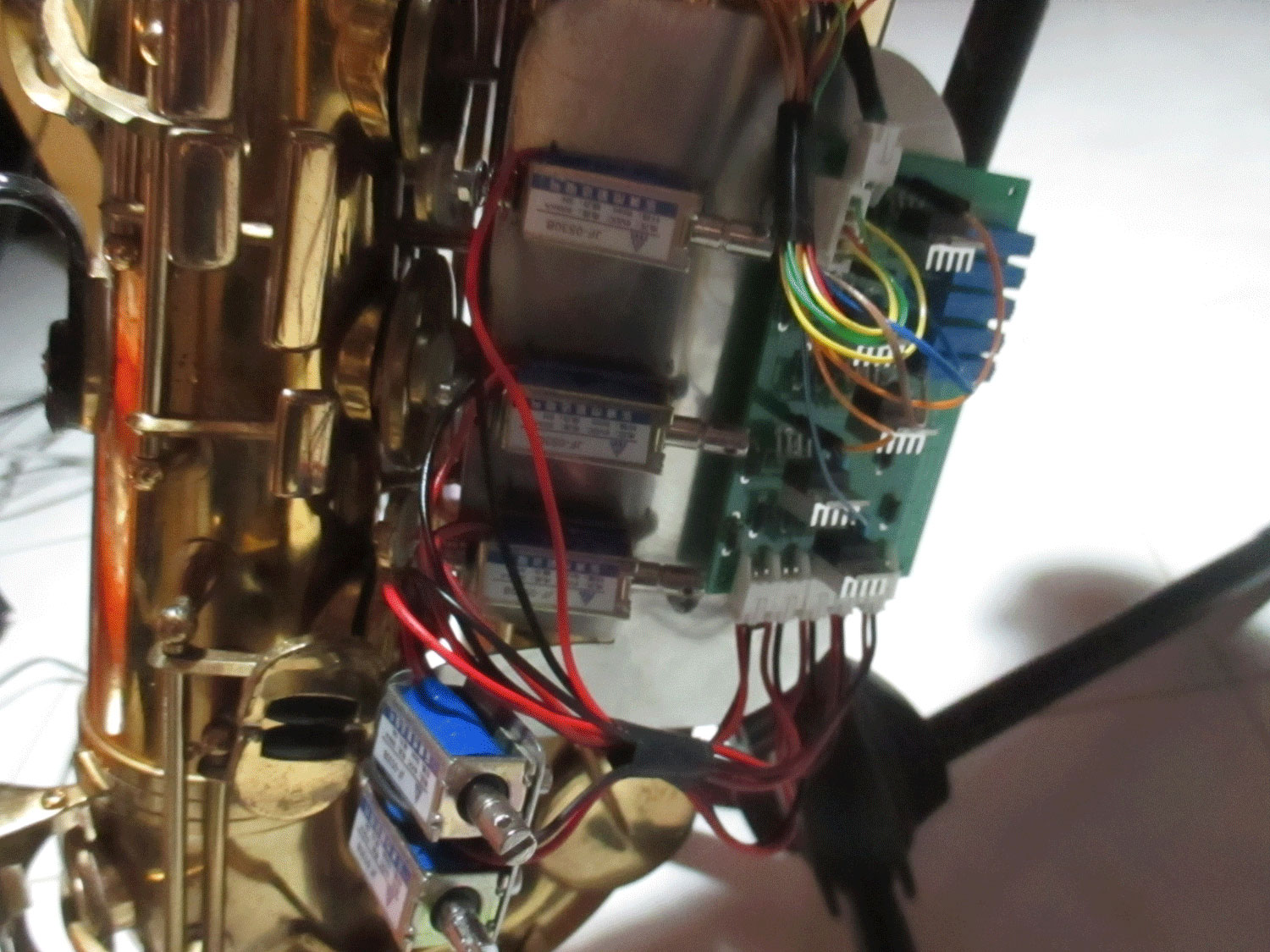From the age of nine (1981) to my motorcycle accident in 1991, although not particularly adept, I enjoyed playing keyboards and woodwind instruments, namely clarinet, flute, and saxophone.
The nerve injury sustained in that accident put an abrupt end to pretty much all playing of woodwind.
 While using the left hand side keys on the sax made it possible to play (almost) two full octaves, a clear sounding E, F, and F# were absent from this range, which made it difficult to play many tunes correctly.
While using the left hand side keys on the sax made it possible to play (almost) two full octaves, a clear sounding E, F, and F# were absent from this range, which made it difficult to play many tunes correctly.
I transferred to playing trumpet in February 1992, which I didn't really enjoy, then later, with the restoration of motor function to my bicep,
I took up the trombone, which, in my opinion, has a much nicer mellow sound to it.
My two saxes have remained set-up since the accident, and I'd have a play on them from time to time; usually playing Pink Panther and Summertime, but I really wanted to be able to play the lower notes again.
Around November, 2016, I began looking into the possibility of an adaptation, and came across an instrument developed by Stelling Brass and Winds and frequently demonstrated by Dr David Nabb.
Their adaptation looks pretty neat, but after contacting David, I decided the cost was not justifiable given my standard of playing.
 My philosophy has always been, "If you can't get what you need, try and make something that will do the job."....
so I set myself the task of developing my own One-Handed Sax.
My philosophy has always been, "If you can't get what you need, try and make something that will do the job."....
so I set myself the task of developing my own One-Handed Sax.
My solution, while limited and in need of further refinements, makes use of five small solenoids that are powered by a solenoid driver circuit. I almost dropped the project after seemingly getting nowhere with the electronics to drive the solenoids, but then I saw a video of Bob Reynolds using just his left hand to play and gained a second wind of motivation. Bob has kindly agreed for me to post a link to his video on here, so please check him out.
My adaptation is completely usable and has restored the range of notes I can play back to where I was in 1991.
At first, I found hitting lower D down to bottom Bb quite difficult until I overhauled the pads and linkages that had disintegrated over the 27 years I have not been using these keys. There was also an issue caused by flexing of the solenoid mounting plate, which I addressed in version 2 of my adaptation.
The notes in the altissimo range are also playable using this adaptation. However, the number of alternative fingerings for such notes are somewhat limited. Although I struggle with the top G, I can comfortably play up to C# in the first altissimo range using only the available adapted keys. More altissimo fingerings would be possible if the right hand palm keys could be added to this adaptation.
Using this adaptation, the musician is free to move around while playing so long as they use the traditional support strap. A full harness support strap is recommended as the standard neck strap can become quite painful if playing for any length of time due to it taking the full weight of the instrument. Personally, I have found placing a traditional neck strap over my left shoulder and under the right arm to be very comfortable (and much easier to don than a full harness!). Having the neck strap just around my neck put a lot of pressure right where my nerve damage is, leaving me in significant pain after playing.
Presented on this page are the resources I have used, a report of my development progress, schematics and Gerber files for my PCB design, and some video footage to accompany my documentation.
For other instrument adaptations, please check out the One Handed Musical Instruments trust website.
I welcome any comments or questions about this adaptation, and openly share my work in the hope someone can take it further.
I have posted a number of YouTube videos explaining the design and examples of me playing at different stages of testing (sorry for the poor quality). You can see them here.
Future Developments:
I have just finished changing and setting all the pads on my alto (a much harder job than doing the tenor), and intend to develop a new adaptation for it. This version will not use any electronics and will, I hope, reinstate some of the right hand palm keys. Details will be added to this site as and when.
Resource Download
- Adaptation Development (pdf)
- PCB Schema (pdf)
- PCB Full View (svg)
- PCB Top View (svg)
- PCB Bottom View (svg)
- PCB Gerber Files (zip)
- Bill of Materials (excel)
- Texas Instruments Development Forum
- Solenoid Specs (pdf)
- DRV101 Solenoid Driver (pdf)
- DRV102 Solenoid Driver (pdf)
- DRV103 Solenoid Driver (pdf)
- TPIC6273 Octal D-type Latch
- TPL7407LA 30-V, 7-Channel NMOS Array Low-Side Driver
- ULN2003A High-Voltage, High-Current Darlington Transistor Arrays
- Version 2 Solenoid Plate CAD Files (pdf format))
- YouTube Channel